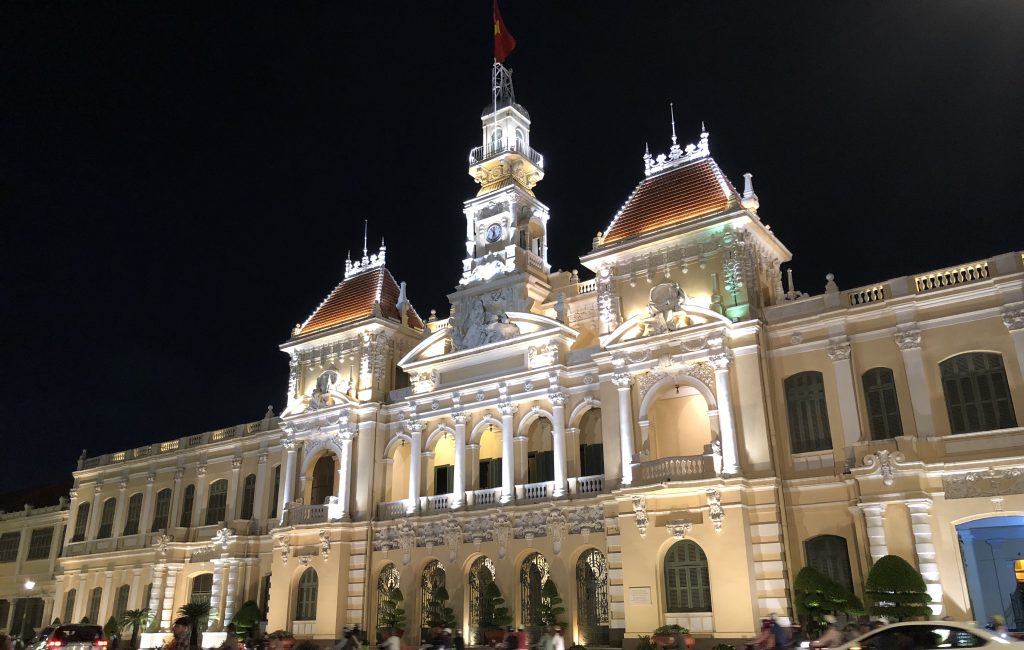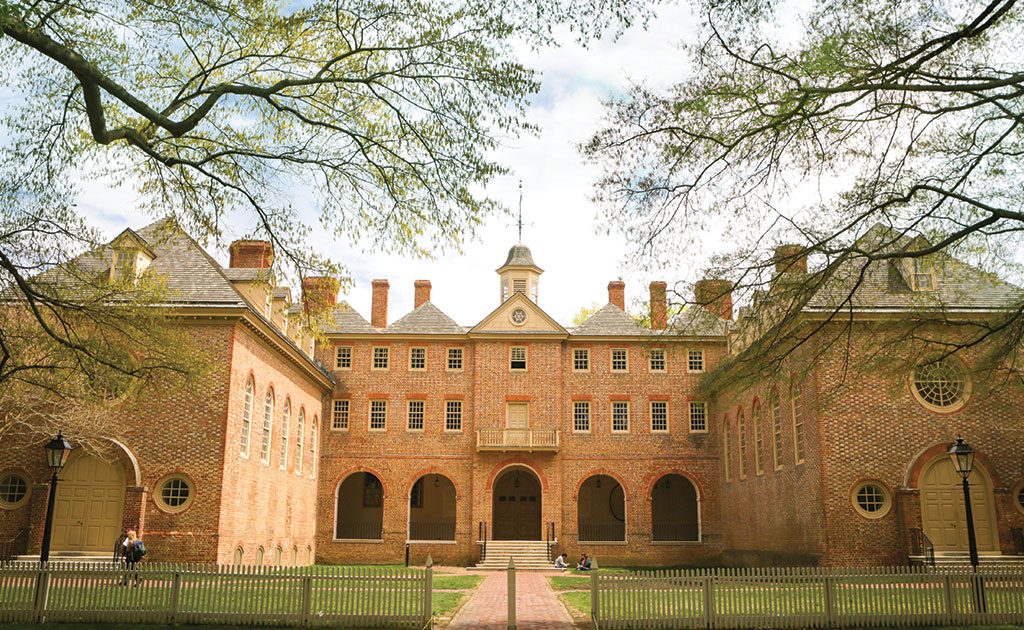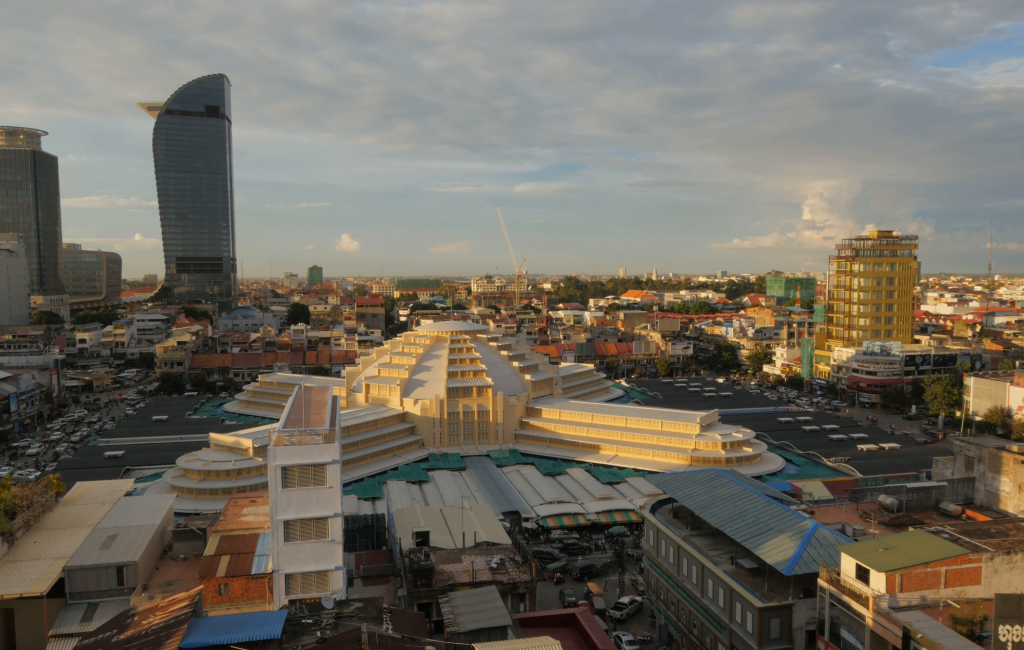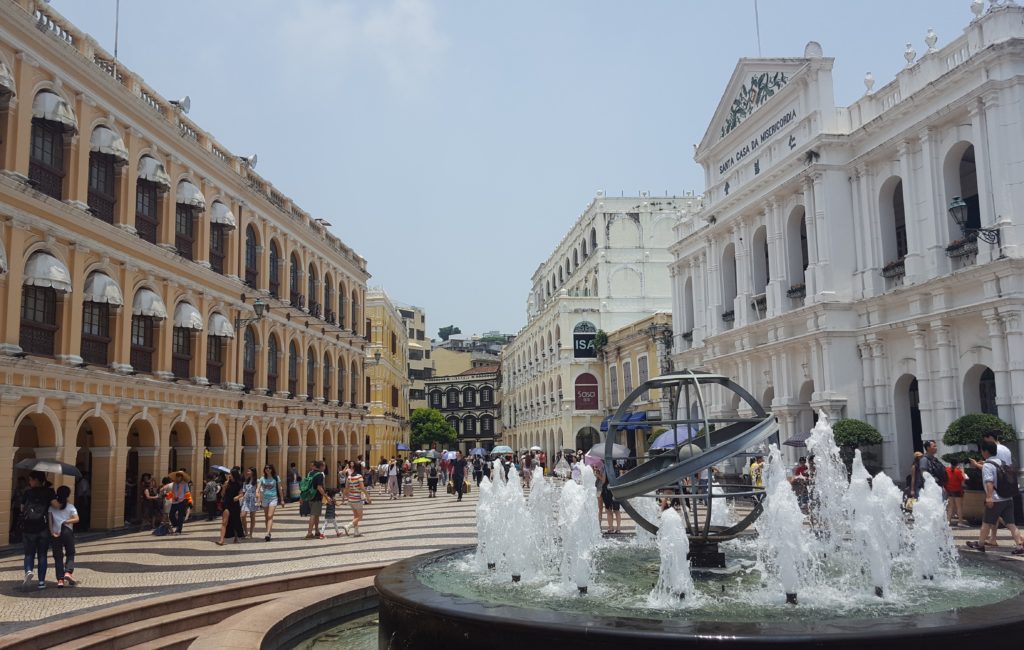
Top 10 Colonial Structures In Macau
You might think of Macau as the “Las Vegas of Asia,” but the Special Administration Region (SAR) of China and former colony of Portugal, is steeped in history and beauty. The Portuguese landed in Macau in 1513 and claimed it as their territory 1557, which was the first European settlement established in East Asia, and subsequently the last, handing the country over to China in 1999.
The territory entered prosperous years, the result of an increasing population and trading, and officially became a Portuguese state in 1887.
Catholicism as a heavy influence, the Portuguese centered their lives around faith and built many churches in the area, which continue to have a big impact on Macanese culture to this day. Macau colonial architecture is rich and alluring, and found all throughout the city, from the small alleyways to the large avenues. Here are the top 10:
1. St. Paul’s Cathedral
The most iconic Macau landmark, the ruins of St. Paul’s Church, also known as Mater Dei, is magnificent with its detail and beauty sitting atop a hill overlooking the city skyline. St. Paul’s, damaged in a fire in 1835, was never rebuilt which left only the 68 steps and granite facade standing.
Built over a span of 38 years, from 1602 to 1640, St. Paul’s Church was one of the largest churches in Asia in that day, but never elevated to cathedral status.
Marvel at the intricacies of its Baroque facade while enjoying a famous pork bun and milk tea from the street vendors next door.
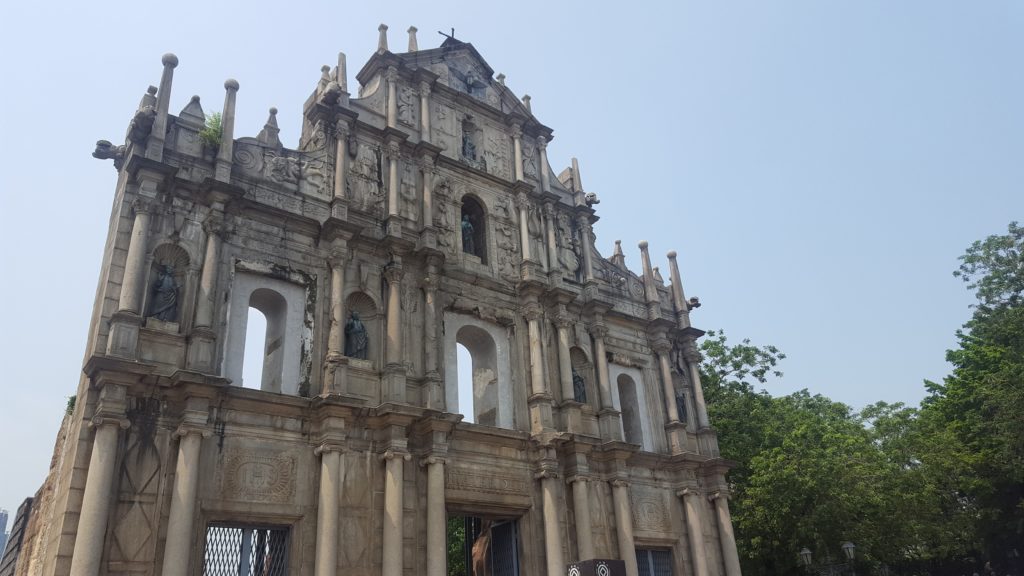
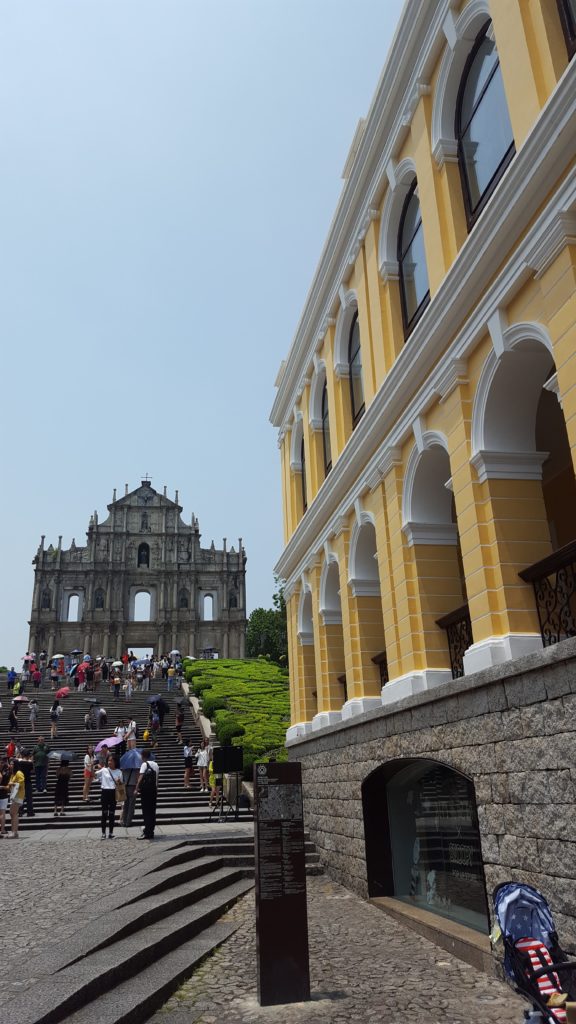
2. Fortaleza do Monte
Fortaleza do Monte, or “Mount Fortress” in Portuguese, is one of the most important Macau colonial structures in terms of territorial defense. The fortress, built in 1617, withstood attacks over the years and is a part of the reason Macau stayed in Portuguese hands for four centuries.
The fortress is built on top of the second tallest hill in Macau, and was designed mainly for defense from the naval attacks. Outfitted with watchtowers and cannons, of which some replicas are sitting there today, the fort could withstand pressure from almost any sea forces of that day.
Within the grounds is the Museum of Macau, a fine museum highlighting the history of Macau and merging of East and West cultures.
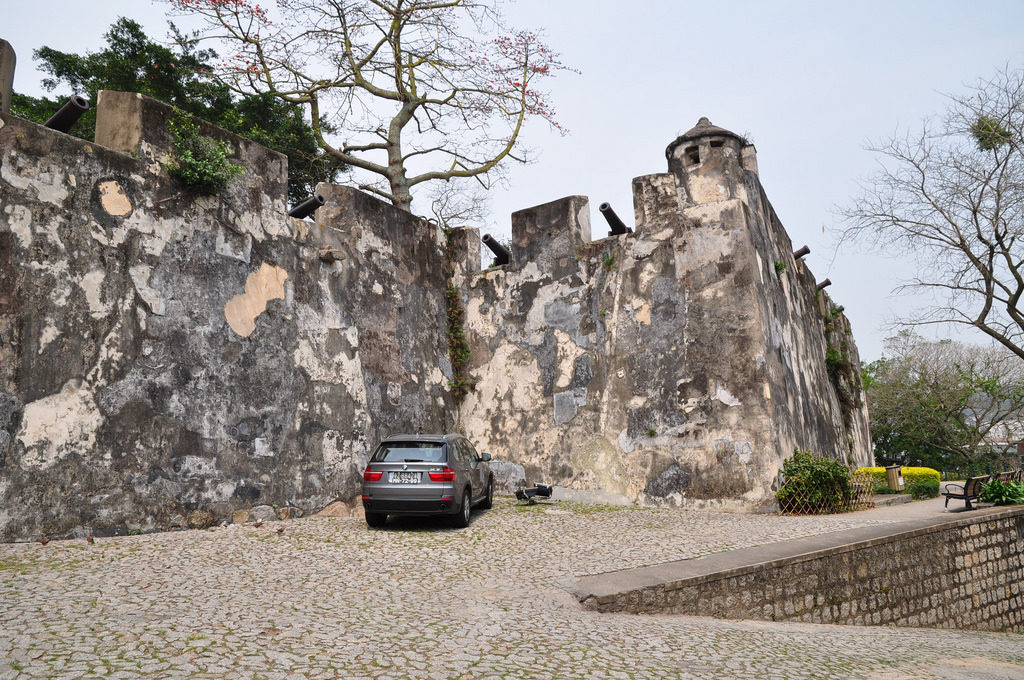
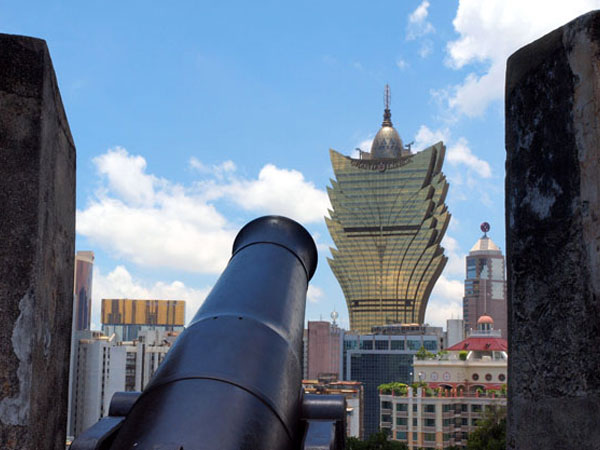
3. Guia Hill
Guia Hill holds an important collection of colonial buildings at the highest point on the Macau peninsula. After the Battle of Macau in 1622, the newly appointed Governor of Macau insisted the city fortify the hill and oversaw the construction of the fort starting in 1622. Later, within the granite fortress, a chapel and lighthouse were built.
The chapel is fairly simple, with a triangular pediment above the door and another stretching across the rectangular structure. However, the most interesting part of the chapel is its murals inside, displaying symbols from both Western and Eastern cultures. The three-level lighthouse, the oldest on the Chinese coast, stands at over 90 meters above sea level, allowing for expansive views, even up to 20 miles on clear days. Take the gondola, called ‘Guia Cable,’ up the hill if you don’t want to sweat heavily when making your way to the top.
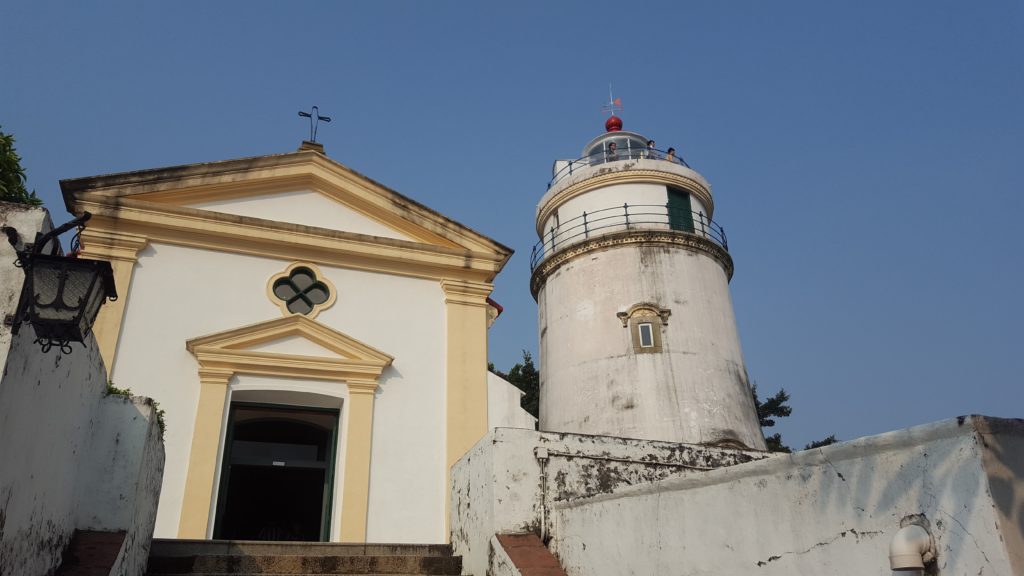
4. St. Dominic’s
St. Dominic’s Church was originally built in 1587, as a small wooden church by three Spanish Dominicans making their way from Acapulco, Mexico, but it wasn’t until 1828 when the church took on the design it has today.
The current design holds elements of Baroque style with its color, intricate designs, and curvature leading up to the pediment, in which the Dominican symbol is placed. It’s currently one of the most active churches in Macau, due to its many opportunities for worship and cultural activities, making it one of the most important religious structures in Macau colonial architecture.
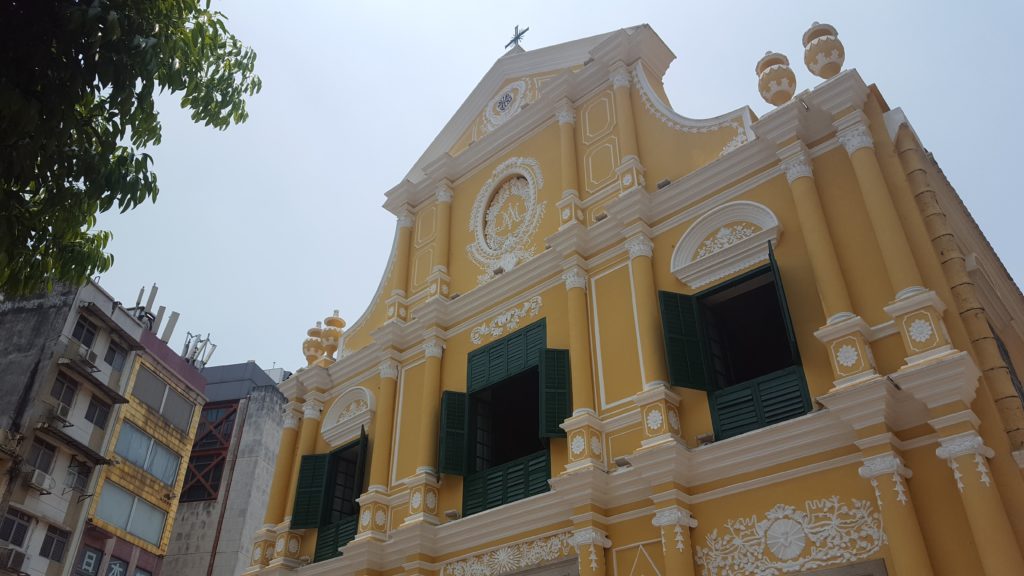
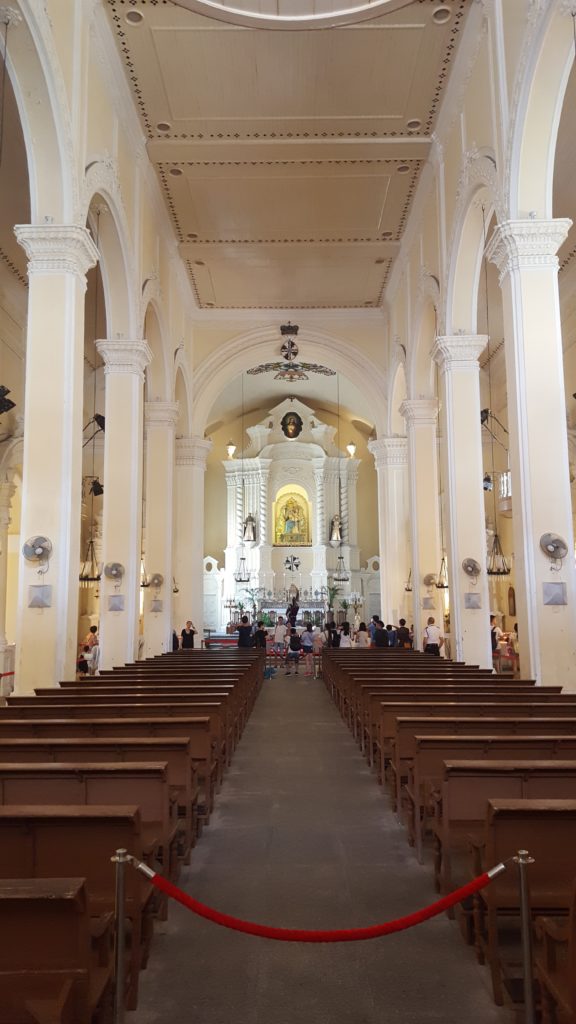
5. St. Lawrence’s
St. Lawrence’s is one of the three oldest churches in Macau, originally constructed in 1560 by the Jesuits, but its current design dates back to 1850. It has a neo-classical design with two square towers on each side of the facade, one holding a bronze bell, and the other a clock. The entryway has two sets of Doric entablatures, leading up to another set of Ionic columns and the triangular pediment.
Back in the 1700 and 1800s, the church had a direct view to the sea, so families of sailors would wait on the steps of the Church to catch a glimpse of the sailors’ return. Stroll through the peaceful gardens of the church, and admire this historic place of worship.
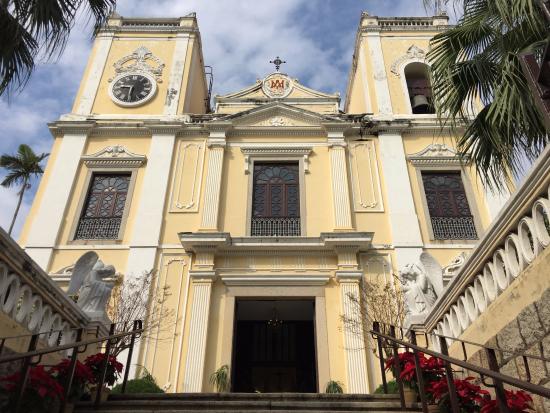
6. Holy House of Mercy (Santa Casa Da Misericordia)
The Holy House of Mercy is constructed in neo-Classical style, dating back to the 16th century and built as a medical clinic and a place to help basically anyone in need. The building now holds a museum, housing artifacts from previous generations.
Its design is ornate, with pairs of Doric pilasters running across the first level of the facade, and Ionic pilasters running across the second, with arches between each set of the pilaster, leading up to a balustrade across the top and the elegant central pediment. The whole of Senado Square is a masterpiece, so as all the people are walking past, stop and take in the stunning views surrounding you.
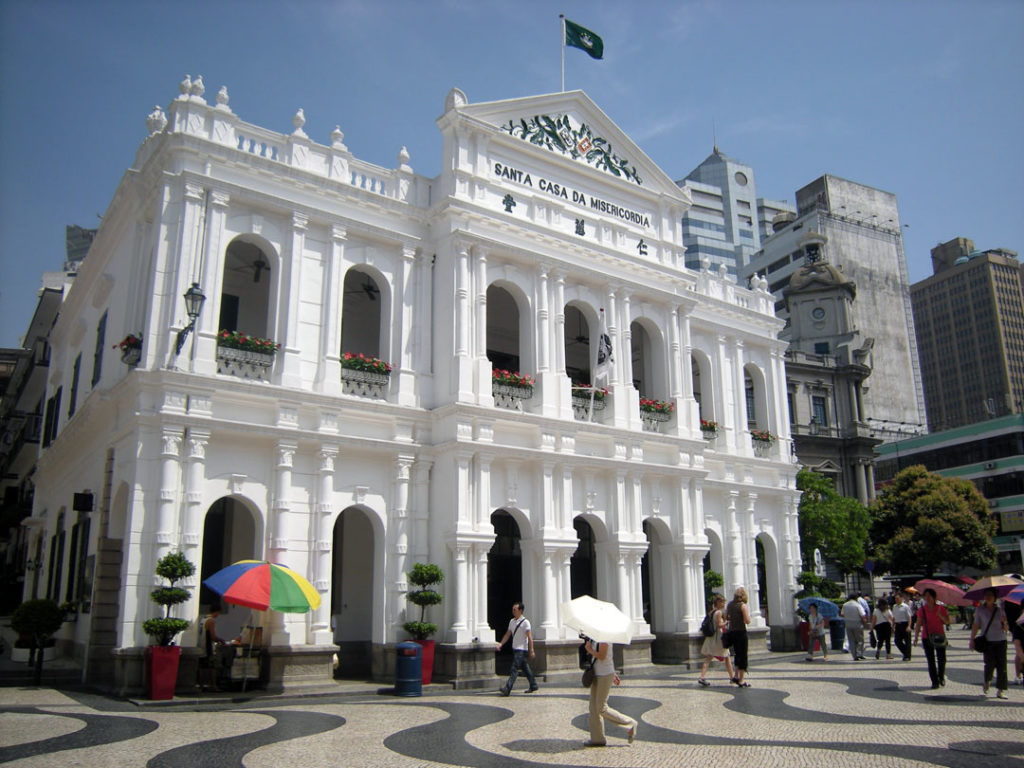
7. Loyal Senate Building (Leal Senado)
The neo-Classical Loyal Senate Building was constructed in 1785 as the territory’s first municipal office building, and it’s actually still used for the same purpose currently. The Portuguese purchased the area from the Chinese the year before and constructed their own building on the land. The renovation of 1874 gave the building its distinctive look it holds today, with its simple, yet strong facade and pediment with only the Macau emblem inside. Visit the exhibitions and serene garden in the back of the building.
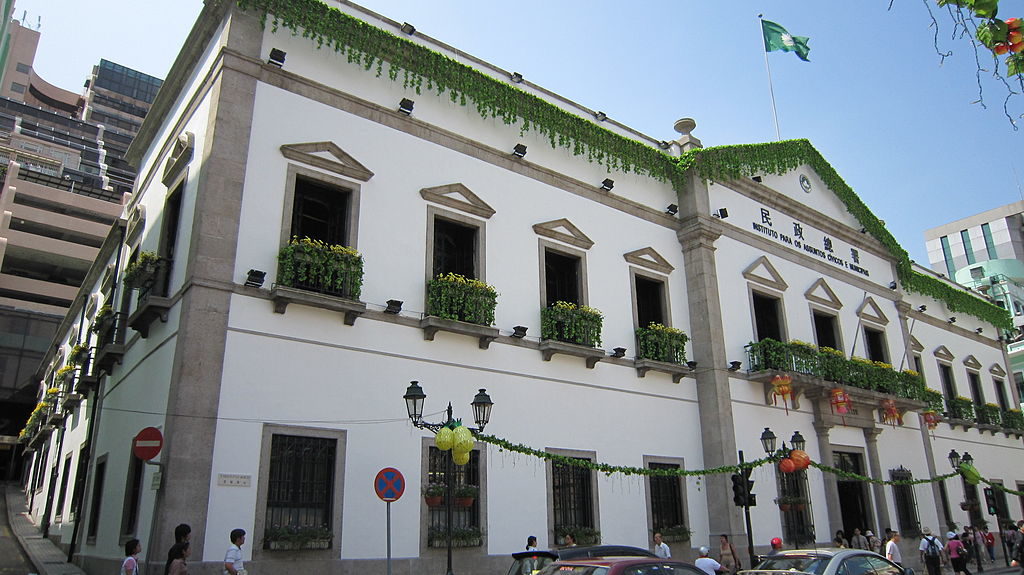
8. Cathedral of the Nativity of Our Lady
The Cathedral of the Nativity of Our Lady became the Cathedral of the Diocese of Macau in 1623 replacing St. Lazarus’, which is a distinction it still holds today. Originally a small wooden chapel, it’s many renovations, specifically the 1937 concrete rebuild, has turned it into the cathedral it is today – a neoclassical structure holding true to its roots with beauty and grace. Currently, the church holds the largest number of Catholic masses in Macau.
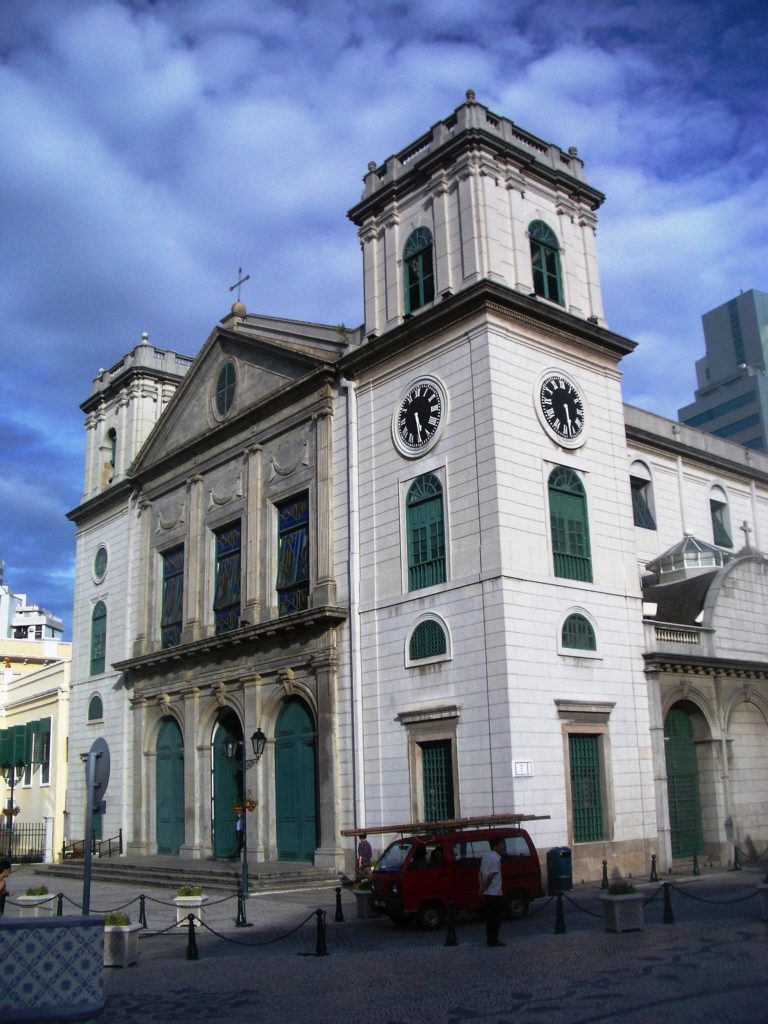
9. Don Pedro Theatre
The oldest Western-style theatre in China, the Dom Pedro V Theatre was built in 1860 to honor the then-current Portuguese King, Dom Pedro (Peter) V. The structure is neo-Classical with four sets of two Ionic pilasters, and three arched entryways, with a triangular pediment stretching across the facade.
The building was vacant for over 20 years, but after a renovation in 1993, the building resumed being one of the most important pieces of Macau colonial architecture in terms of the arts, and is now a big piece of the community.
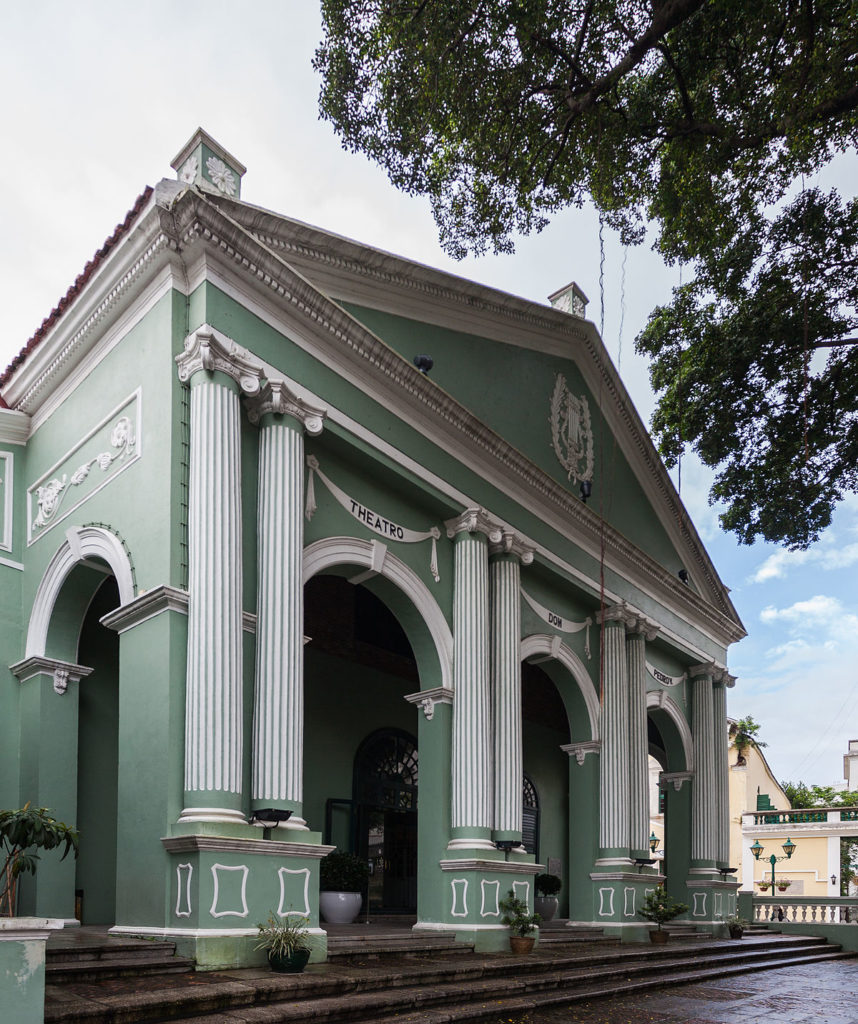
10. Macau General Post Office
The General Post Office of Macau is a unique structure standing on Macau’s most famous street, Avenida de Almeida Ribeiro. Built in 1929 in neoclassical style, the structure has an interesting design, complete with a clock tower above the entrance which have double Ionic columns on stone bases, and double Corinthian columns on the third level. It remains the Headquarters of the Macau Post Office to this day.
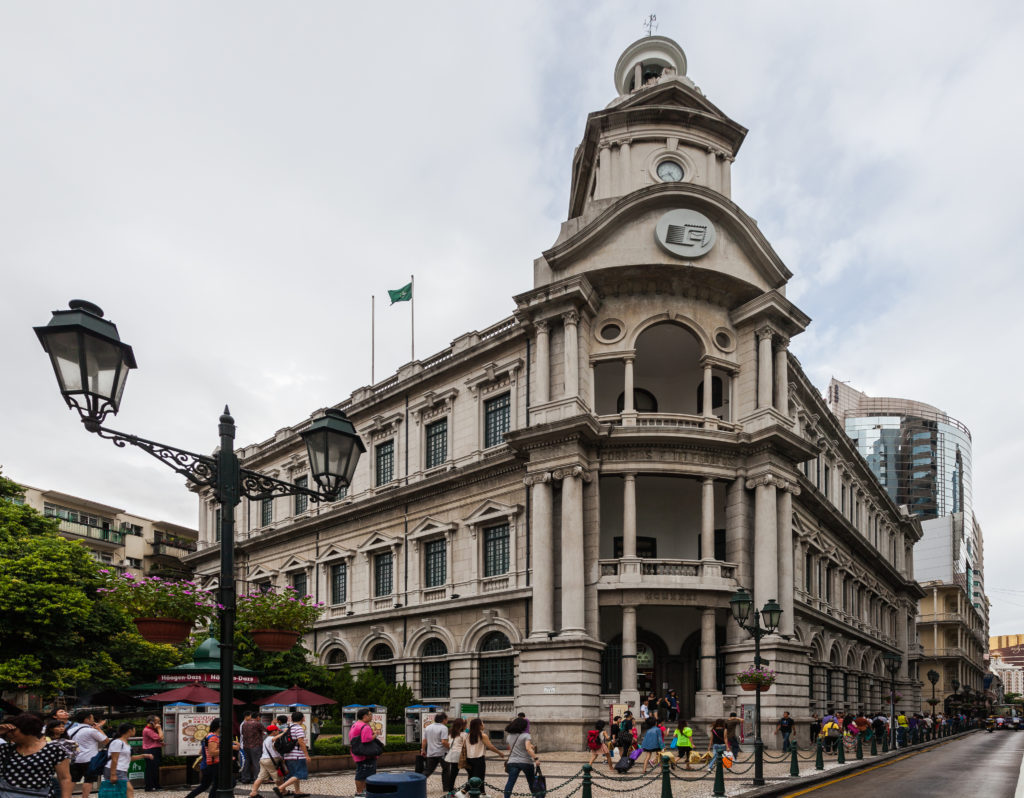
Honorable Mention (in no particular order):
St. Augustine’s
Military Club
St. Anthony’s
Sir Robert Ho Tung Library
St. Joseph’s
Our Lady of Penha Chapel
Map:
Latest posts by Doug Chesney (see all)
- 48 Hours in Ho Chi Minh City, Vietnam - November 9, 2018
- The Nine Colonial Colleges - October 3, 2018
- Top 10 Colonial Buildings in Phnom Penh - September 12, 2018

